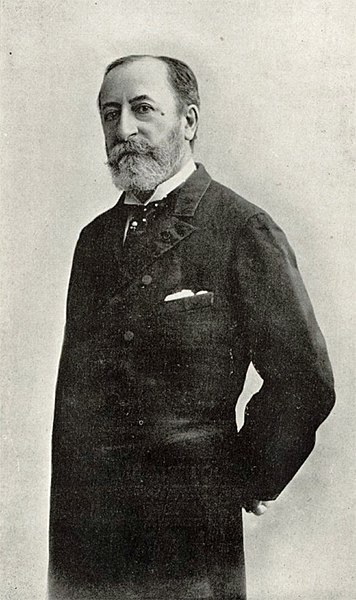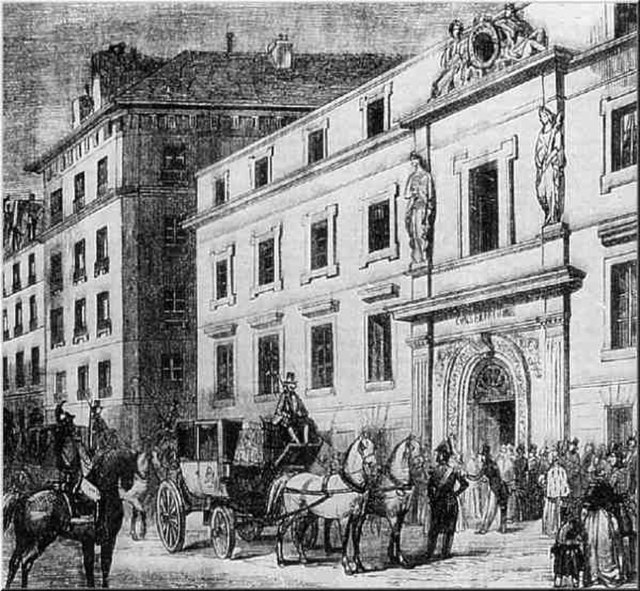The Septet in E♭ major, Op. 65, was written by Camille Saint-Saëns between 1879 and 1880 for the unusual combination of trumpet, two violins, viola, cello, double bass and piano. Like the suites Opp. 16, 49, 90, the septet is a neoclassical work that revives 17th-century French dance forms, reflecting Saint-Saëns's interest in the largely forgotten French musical traditions of the 17th century. The work was dedicated to Émile Lemoine, a mathematician and founder of the chamber music society La Trompette, who had long requested Saint-Saëns to compose a piece featuring the trumpet.
Title page of the autograph, with a drawing of a trumpet in the center. The note on the right bottom, added by Lemoine, tells the work's compositional history.
Saint-Saëns ca. 1880
Charles-Camille Saint-Saëns was a French composer, organist, conductor and pianist of the Romantic era. His best-known works include Introduction and Rondo Capriccioso (1863), the Second Piano Concerto (1868), the First Cello Concerto (1872), Danse macabre (1874), the opera Samson and Delilah (1877), the Third Violin Concerto (1880), the Third ("Organ") Symphony (1886) and The Carnival of the Animals (1886).
Saint-Saëns c. 1880
The rue du Jardinet, site of Saint-Saëns's birthplace
Saint-Saëns as a boy
The old Paris Conservatoire building, where Saint-Saëns studied





